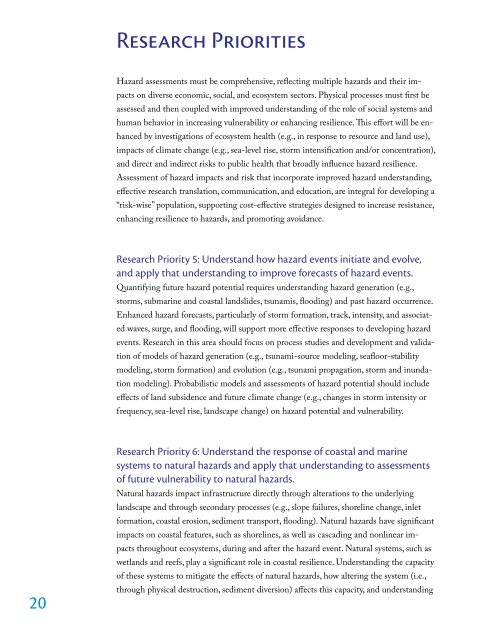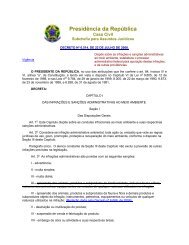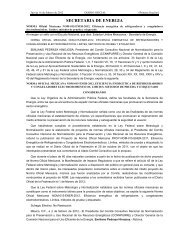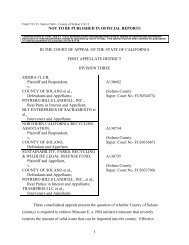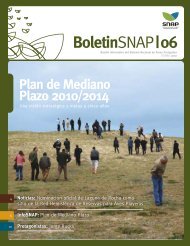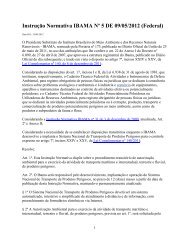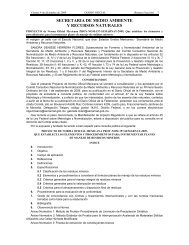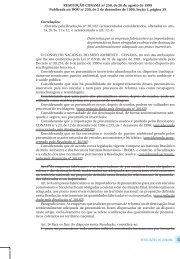OceAn science OceAn science OceAn science
OceAn science OceAn science OceAn science
OceAn science OceAn science OceAn science
Create successful ePaper yourself
Turn your PDF publications into a flip-book with our unique Google optimized e-Paper software.
Research Priorities<br />
Hazard assessments must be comprehensive, reflecting multiple hazards and their impacts<br />
on diverse economic, social, and ecosystem sectors. Physical processes must first be<br />
assessed and then coupled with improved understanding of the role of social systems and<br />
human behavior in increasing vulnerability or enhancing resilience. This effort will be enhanced<br />
by investigations of ecosystem health (e.g., in response to resource and land use),<br />
impacts of climate change (e.g., sea-level rise, storm intensification and/or concentration),<br />
and direct and indirect risks to public health that broadly influence hazard resilience.<br />
Assessment of hazard impacts and risk that incorporate improved hazard understanding,<br />
effective research translation, communication, and education, are integral for developing a<br />
“risk-wise” population, supporting cost-effective strategies designed to increase resistance,<br />
enhancing resilience to hazards, and promoting avoidance.<br />
Research Priority 5: Understand how hazard events initiate and evolve,<br />
and apply that understanding to improve forecasts of hazard events.<br />
Quantifying future hazard potential requires understanding hazard generation (e.g.,<br />
storms, submarine and coastal landslides, tsunamis, flooding) and past hazard occurrence.<br />
Enhanced hazard forecasts, particularly of storm formation, track, intensity, and associated<br />
waves, surge, and flooding, will support more effective responses to developing hazard<br />
events. Research in this area should focus on process studies and development and validation<br />
of models of hazard generation (e.g., tsunami-source modeling, seafloor-stability<br />
modeling, storm formation) and evolution (e.g., tsunami propagation, storm and inundation<br />
modeling). Probabilistic models and assessments of hazard potential should include<br />
effects of land subsidence and future climate change (e.g., changes in storm intensity or<br />
frequency, sea-level rise, landscape change) on hazard potential and vulnerability.<br />
20<br />
Research Priority 6: Understand the response of coastal and marine<br />
systems to natural hazards and apply that understanding to assessments<br />
of future vulnerability to natural hazards.<br />
Natural hazards impact infrastructure directly through alterations to the underlying<br />
landscape and through secondary processes (e.g., slope failures, shoreline change, inlet<br />
formation, coastal erosion, sediment transport, flooding). Natural hazards have significant<br />
impacts on coastal features, such as shorelines, as well as cascading and nonlinear impacts<br />
throughout ecosystems, during and after the hazard event. Natural systems, such as<br />
wetlands and reefs, play a significant role in coastal resilience. Understanding the capacity<br />
of these systems to mitigate the effects of natural hazards, how altering the system (i.e.,<br />
through physical destruction, sediment diversion) affects this capacity, and understanding


